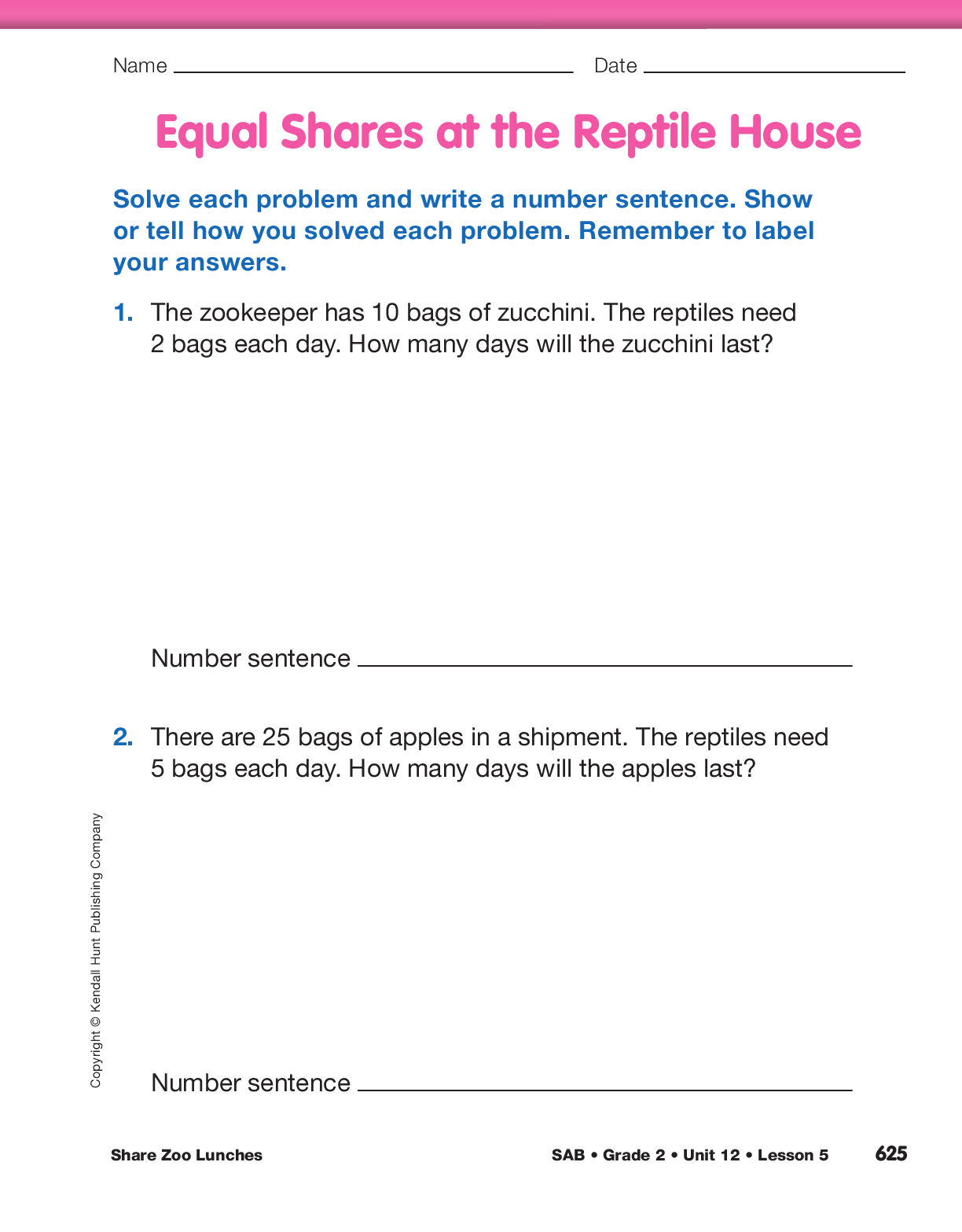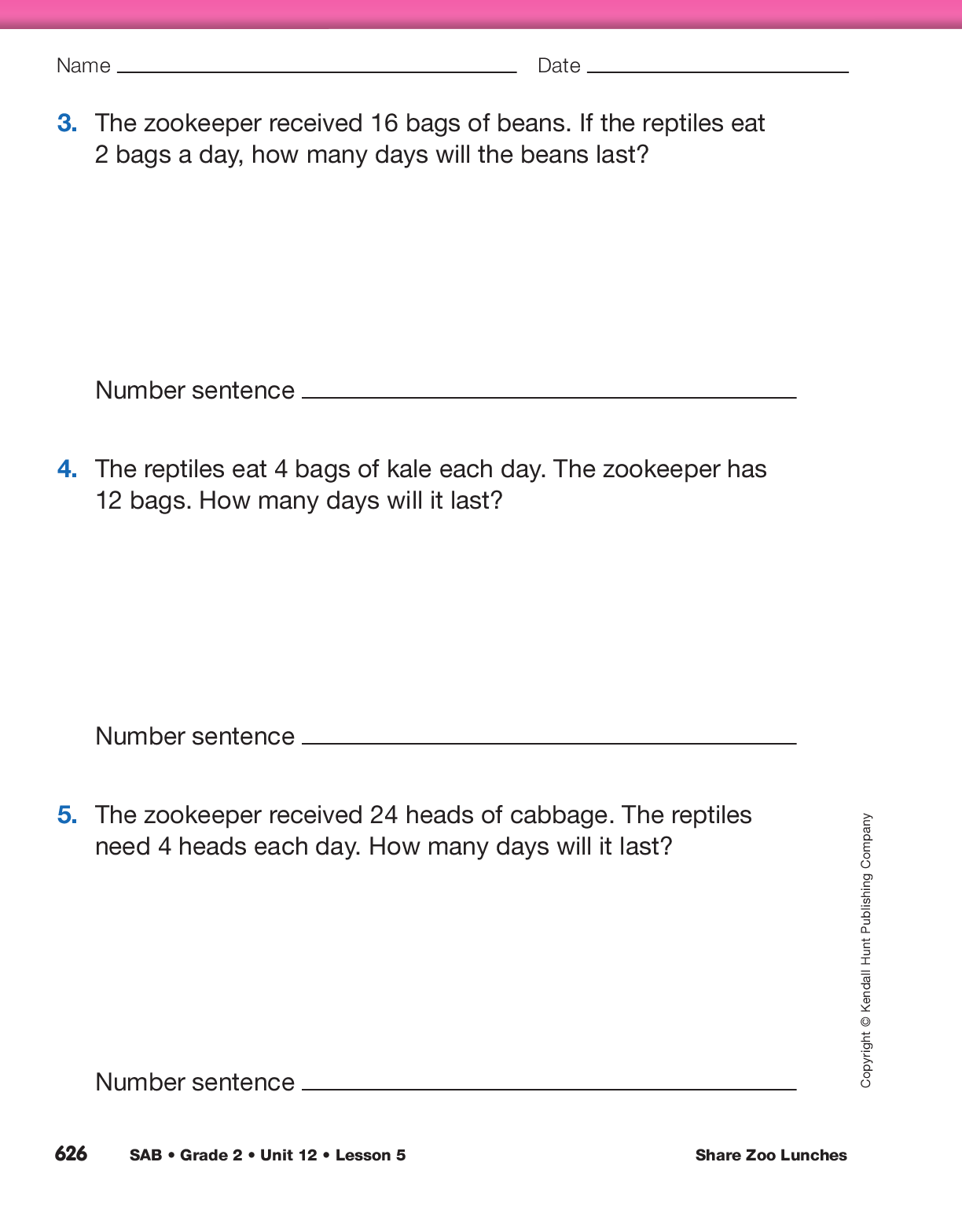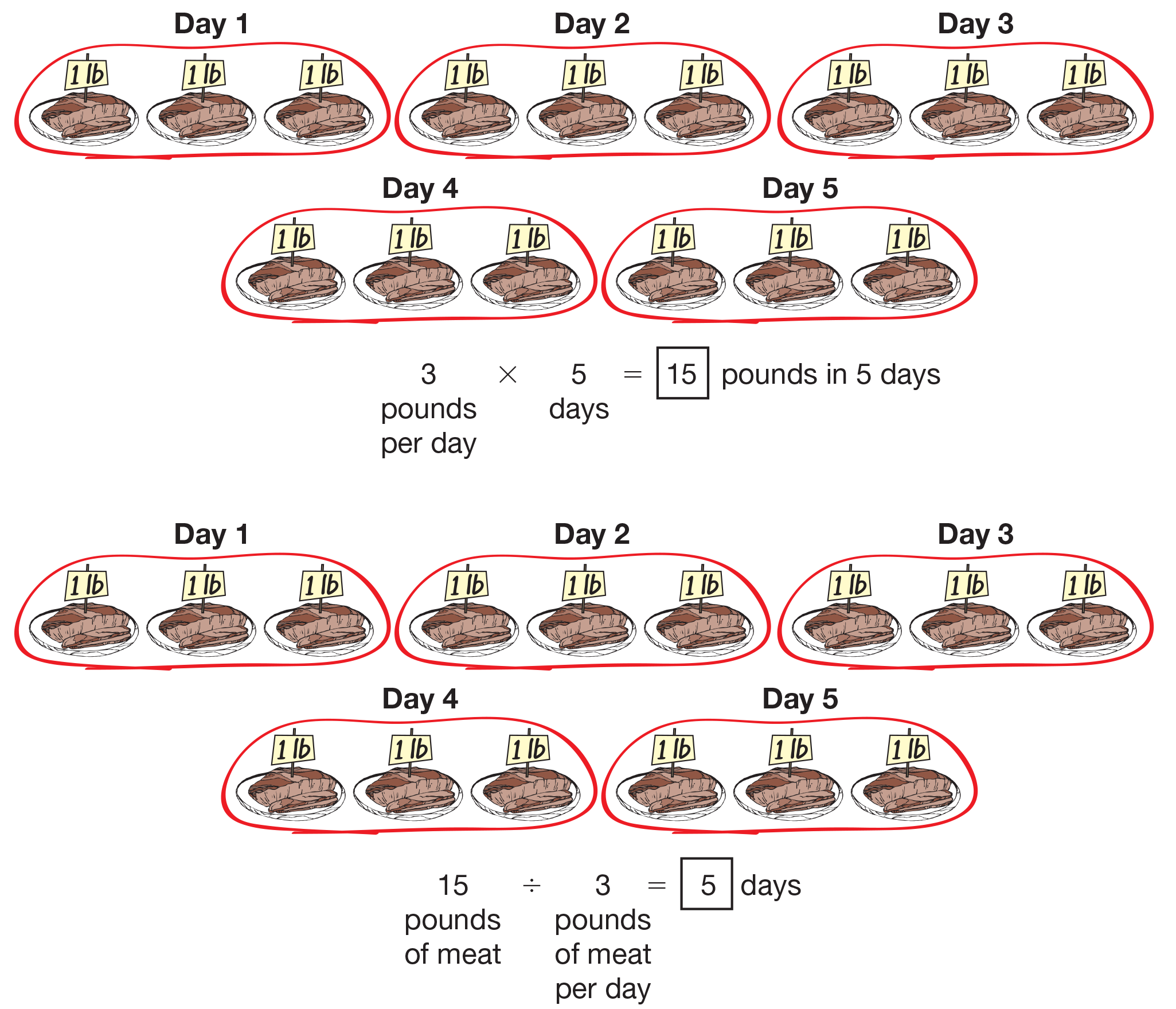Add to Chart of Strategies.
- The zookeeper has 15 apples and plans to give
5 apples to each toucan, a very colorful bird. How many toucans will get apples?
In measurement division problems, such as this one,
the total number of objects and the number of
objects in each group is known. Students will often
use direct modeling with manipulatives and drawings.
After students solve the problem, discuss how
they could use some of the other strategies and tools
on the class chart.
- How could you use the constant math hopper to solve this problem?
(Possible response: Start at 15 and make −5 hops to the left on the number line.
You can make 3 hops altogether, so the answer is
3 toucans.)
- How could you use an array to solve the problem? (Possible response: Make rows of 5 until you get to 15.
You can make 3 rows of 5, so I know that 3 toucans will get apples.)
- How did you decide how to label your answer?
(I am looking for the number of toucans that will get apples, so the label is toucans.)
As students explain how to use strategies and tools for the measurement division problem, make a list of them on the second part of the class chart with
examples of how the strategies and tools are used. See Figure 4 for additional ways to solve the problem and sample entries for the chart.
Make Connections between Multiplication and Division.
To help students see the connection between multiplication and division, use the display
of the
Sharing Problems Master to present Question 3:
- The zookeeper feeds the lions 3 pounds of meat each day. How much meat do the lions eat in
5 days?
Question 3 is a repeated addition or multiplication problem. Have students work in pairs to solve the problem.
- What is the answer to the problem? (15 pounds)
- How did you decide how to label your answer? (The question asks how much meat do the lions
eat, so I looked back at the question and used the label “pounds.”)
- How did you solve the problem? (Possible response: I used repeated addition. I added 3 five times and I
got 15.)
- What number sentence represents this problem? (Possible response: 3 × 5 = 15 pounds)
Introduce Division Number Sentences.
- The lions eat 3 pounds of meat each day. The zoo has 15 pounds of meat. How many days can the zookeeper feed the lions?
Before students solve the problem, ask:
- How does the number sentence 3 × ___ = 15 fit this problem? (Possible response: I know 3 pounds of meat are eaten each day and there is
a total of 15 pounds. I need to figure out the number of days. That’s what’s missing.)
- Can anyone think of an addition sentence to describe this problem? Does a repeated addition
sentence like 3 + 3 + . . . and so on fit? (Possible response: Not yet, because I don’t know how many 3s I will need.)
Question 4 is a division problem related to Question 3. Have students work in pairs to solve the problem.
- What is the answer to the problem? (5 days)
- How did you solve the problem? (Possible
response: In Question 3, the numbers are the
same. The lions ate 3 pounds of meat every day
and the lions ate 15 pounds in 5 days. In
Question 4, the numbers are the same, so I knew
that it took 5 days for the lions to eat 15 pounds.)[See Figure 5.]
- How do you complete the number sentence
3 × ___ = 15? (5)
- Now can you write an addition sentence to explain your solution? (Yes, because now I know there
are
5 days of 3 pounds of meat, so there are 5 threes:
3 + 3 + 3 + 3 + 3 = 15.)
Show students the division symbol (÷). Tell them that they can also describe the problem with a division number sentence. Tell students that the division
sign means to divide the first number into equal groups.
- How else could we write a number sentence to describe this problem using the division sign? What is being shared in the problem? (15 pounds of meat)
Write “15” for the students to see.
- How are the 15 pounds being shared or divided? How much is eaten each day? (3 pounds a day)
Continue writing the number sentence so it reads “15 ÷ 3” and read the sentence aloud.
- How many days will the meat last? What was your answer? (5 days)
Complete the number sentence “15 ÷ 3 = 5” and read the sentence aloud.
- What do you think each number in this number sentence means? (The 15 is the total number of
pounds of meat, the 3 is the pounds of meat they eat every day, and the 5 is the number of days the meat will last.)
Before they solve all of the problems on the Sharing Problems
Master, have student pairs work on the
Equal Shares at the Reptile House pages in the Student Activity Book. Students are asked to write
number sentences that describe their solutions. Remind students that there are many viable ways to
write number sentences for their answers. Often, repeated addition, multiplication, and division number sentences are all options.
Upon completion, use a display of The Equal Shares at the Reptile House pages to have students share
strategies, write the number sentences, and demonstrate what each number in the sentence represents.
















